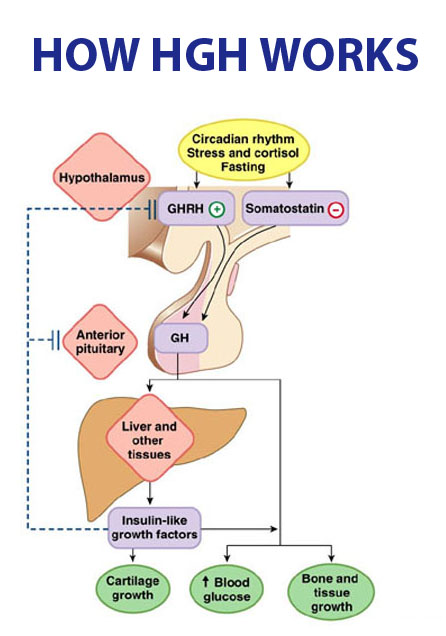Page Contents
OVERVIEW
This page focuses on the hormonal pathways that control the production of growth hormone (GH). GH is very important for bone, muscle, and organ growth and development.

HYPOTHALAMUS
The hypothalamus starts off this hormonal pathway by the release of GH-releasing hormone (GHRH). When this hormone is released by the hypothalamus it acts on the anterior pituitary to release growth hormone (GH)
Factors that increase GHRH secretion include the following:
- Puberty
- Exercise
- Sleep (circadian rhythms)
Factors that decrease GHRH secretion include the following:
- Insulin-like growth factors (ex. IGF-1)
ANTERIOR PITUITARY
The anterior pituitary continues this signaling pathway by releasing GH (which in turn acts on the liver to release insulin-like growth factors)
Factors that increase GH secretion include the following:
- GHRH
- Estrogen
Factors that decrease GH secretion include the following:
- Somatostatin
- Insulin-like growth factors (ex. IGF-1)
- Glucose
LIVER
GH acts on the liver to produce insulin-like growth factors (common example is IGF-1).
WHAT DO INSULIN-LIKE GROWTH FACTORS (IGF-1) DO?
The actions of GH are mediated through hormones like IGF-1 who have the following activity:
- Promote linear bone development in individuals who have the growth plates of long bones still open
- Stimulate muscle growth
- Increase insulin resistance
- Feed back inhibition on the GH hormone axis (at the level of the hypothalamus and anterior pituitary).
Page Updated: 02.20.2016